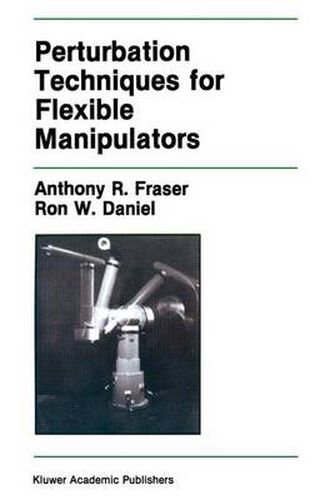Readings Newsletter
Become a Readings Member to make your shopping experience even easier.
Sign in or sign up for free!
You’re not far away from qualifying for FREE standard shipping within Australia
You’ve qualified for FREE standard shipping within Australia
The cart is loading…






This title is printed to order. This book may have been self-published. If so, we cannot guarantee the quality of the content. In the main most books will have gone through the editing process however some may not. We therefore suggest that you be aware of this before ordering this book. If in doubt check either the author or publisher’s details as we are unable to accept any returns unless they are faulty. Please contact us if you have any questions.
A manipulator, or ‘robot’, consists of a series of bodies (links) connected by joints to form a spatial mechanism. Usually the links are connected serially to form an open chain. The joints are either revolute (rotary) or prismatic (telescopic), various combinations of the two giving a wide va riety of possible configurations. Motive power is provided by pneumatic, hydraulic or electrical actuation of the joints. The robot arm is distinguished from other active spatial mechanisms by its reprogrammability. Therefore, the controller is integral to any de scription of the arm. In contrast with many other controlled processes (e. g. batch reactors), it is possible to model the dynamics of a ma nipulator very accurately. Unfortunately, for practical arm designs, the resulting models are complex and a considerable amount of research ef fort has gone into improving their numerical efficiency with a view to real time solution [32,41,51,61,77,87,91]. In recent years, improvements in electric motor technology coupled with new designs, such as direct-drive arms, have led to a rapid increase in the speed and load-carrying capabilities of manipulators. However, this has meant that the flexibility of the nominally rigid links has become increasingly significant. Present generation manipulators are limited to a load-carrying capacity of typically 5-10% of their own weight by the requirement of rigidity. For example, the Cincinatti-Milicron T3R3 robot weighs more than 1800 kg but has a maximum payload capacity of 23 kg.
$9.00 standard shipping within Australia
FREE standard shipping within Australia for orders over $100.00
Express & International shipping calculated at checkout
This title is printed to order. This book may have been self-published. If so, we cannot guarantee the quality of the content. In the main most books will have gone through the editing process however some may not. We therefore suggest that you be aware of this before ordering this book. If in doubt check either the author or publisher’s details as we are unable to accept any returns unless they are faulty. Please contact us if you have any questions.
A manipulator, or ‘robot’, consists of a series of bodies (links) connected by joints to form a spatial mechanism. Usually the links are connected serially to form an open chain. The joints are either revolute (rotary) or prismatic (telescopic), various combinations of the two giving a wide va riety of possible configurations. Motive power is provided by pneumatic, hydraulic or electrical actuation of the joints. The robot arm is distinguished from other active spatial mechanisms by its reprogrammability. Therefore, the controller is integral to any de scription of the arm. In contrast with many other controlled processes (e. g. batch reactors), it is possible to model the dynamics of a ma nipulator very accurately. Unfortunately, for practical arm designs, the resulting models are complex and a considerable amount of research ef fort has gone into improving their numerical efficiency with a view to real time solution [32,41,51,61,77,87,91]. In recent years, improvements in electric motor technology coupled with new designs, such as direct-drive arms, have led to a rapid increase in the speed and load-carrying capabilities of manipulators. However, this has meant that the flexibility of the nominally rigid links has become increasingly significant. Present generation manipulators are limited to a load-carrying capacity of typically 5-10% of their own weight by the requirement of rigidity. For example, the Cincinatti-Milicron T3R3 robot weighs more than 1800 kg but has a maximum payload capacity of 23 kg.